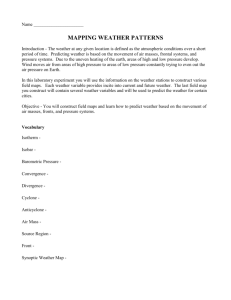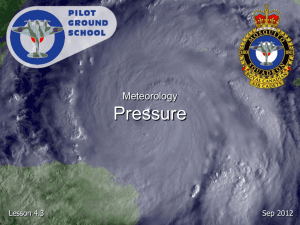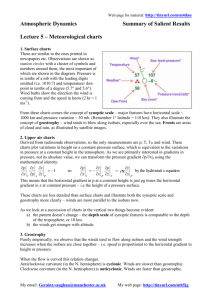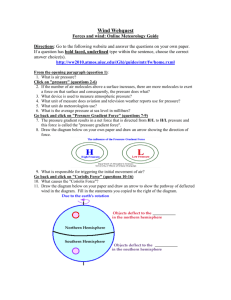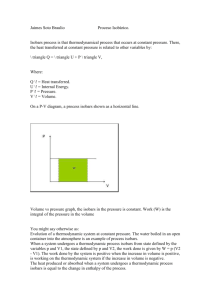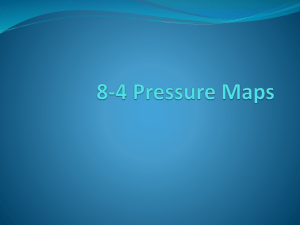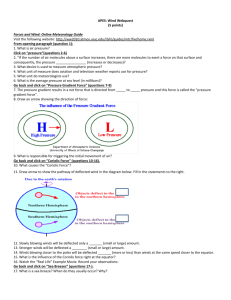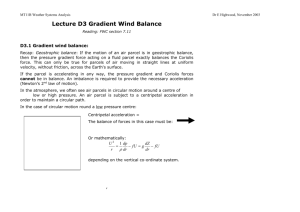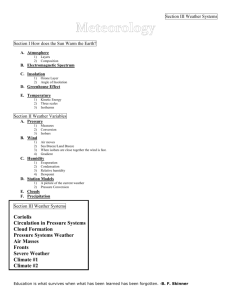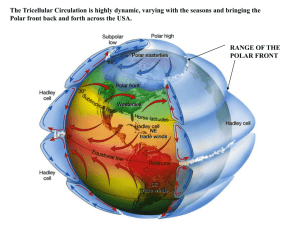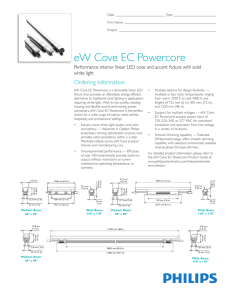Lab 6-5
advertisement
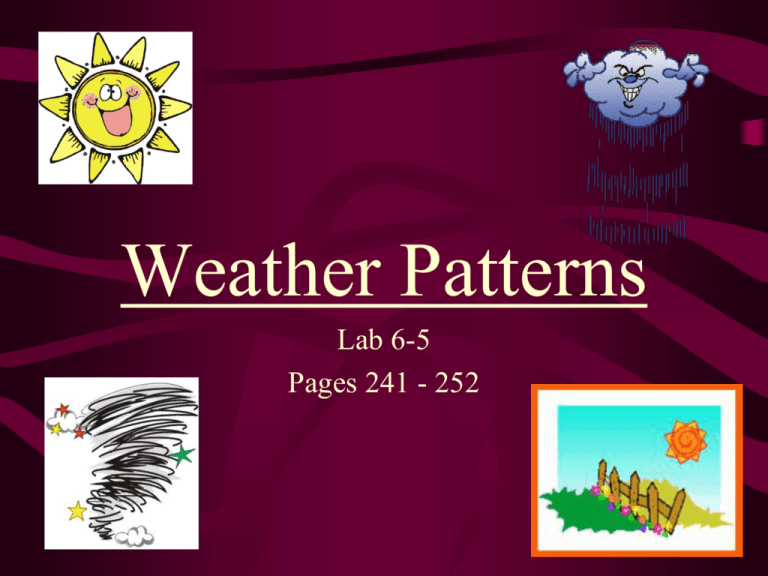
Weather Patterns Lab 6-5 Pages 241 - 252 Weather Patterns • AIM • OBJECTIVE • Understand how the • Construct field variables we have maps and learn to learned about so far identify patterns work together to than can be used to create weather predict weather. systems. Vocab • Synoptic Weather Map: A map that represents all the atmospheric variables in an area. • Isotherm: Lines on a map connecting points of equal temperature; generally run parallel with the equator as temperatures decrease with increasing distance from the equator. • Barometric Pressure: The weight of the air in the atmosphere – High Pressure; nice weather – Low Pressure; bad/rainy weather • Isobar: Lines on a map connecting points of equal barometric pressure. • Convergence: Wind blowing toward the center (cyclone) • Divergence: Wind blowing away from the center (anticyclone) • Cyclone: Low pressure system with air moving inward toward the center. • Anticyclone: High pressure system with air moving away and outward from the center. • Air Mass: A large body of air with similar pressure, temperature and moisture. Acquired from a source region. • Source Region: An area of Earth’s surface over which an air mass forms and acquires its characteristics. • Front: The boundary between two air masses of different characteristics. Calculating Gradient • Gradient is the rate of change between two points and is calculated by dividing the difference between two points by the distance. • For example: If Galveston, TX and Kansas City, KS are 700 miles apart and the temperature in Galveston is 60º and the temperature in Kansas City is 50º then . . . • 60º - 50º = 10º (That’s your difference) • Distance = 700 miles • 10º/700 = .014º/Mile • Gradient = .014º/Mile • Are you ready to draw your Synoptic Weather Map? Map A: Isotherms • Connect points of equal value • Use an interval of 10°F • Stop your lines when they go off the coast. If more dots are needed, add some… Map B: Isobars • Write the following in an empty space on the map: Millibars Station Model Code 1024.0 1020.0 1016.0 1012.0 1008.0 1004.0 1000.0 240 200 160 120 080 040 000 Map B: Isobars- Continued • Draw isobars • Use an interval of 4mb. • Label the highest pressure with an • Label the lowest pressure with an Drawing isobars . . . Map C: Wind Patterns Draw arrows… Map C: Wind Patterns Now Draw Large Arrows… Map D: Precipitation Patterns • Draw a line encompassing the entire area where rain is falling. • Lightly shade it in with pencil. • Label the Air Masses. Handy Dandy Earth Science Reference Tables, pg 13 • An Air Mass is a large region of air that has the same temperature and humidity. • It gets its properties from hanging out in the same region for a while. For example: • If the source region is the gulf of Mexico and the air comes to Long Island… • It will feel warm and moist to us: maritime tropical (mT). • If it comes from central Canada… • It will feel cold and dry to us: continental polar (cP) What type of air mass? mP Cool & moist: mP Cool & Dry: mP cP cT Warm & Moist: mT mT mT Make the Synoptic Map • Use Instruction #1 as a check list of things to put on the map. • Add the fronts.
